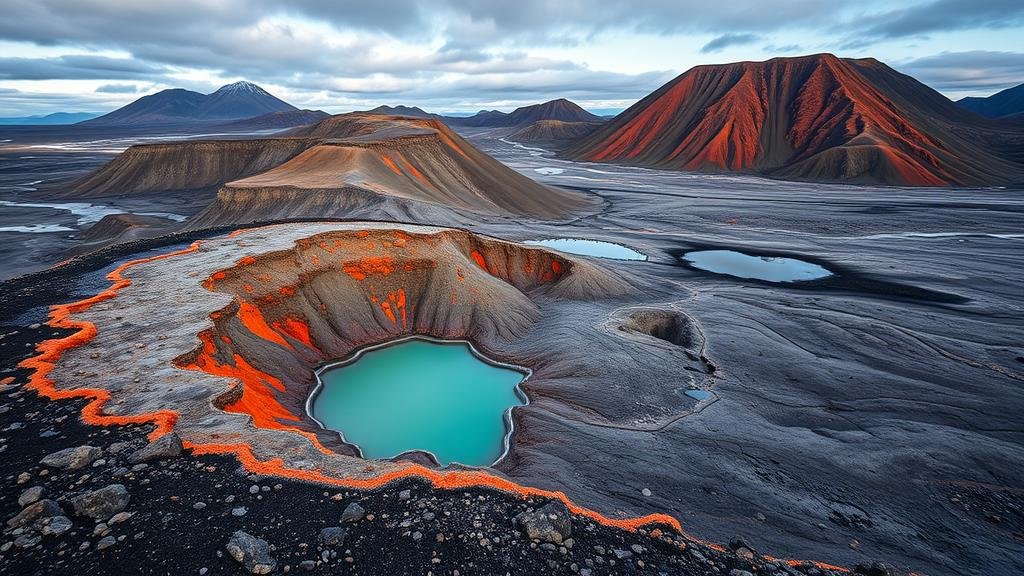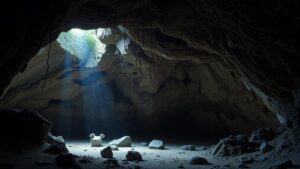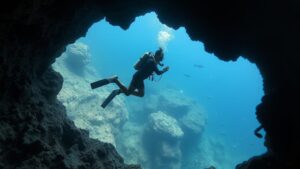Discovering the unique volcanic landscapes of the Kamchatka Peninsula in Russia.
Discovering the Unique Volcanic Landscapes of the Kamchatka Peninsula in Russia
The Kamchatka Peninsula, located in the Russian Far East, is a wonderland of volcanic activity and rugged natural beauty. Spanning approximately 1,250 kilometers long and 450 kilometers wide, this region boasts over 300 volcanoes, with 29 of them classified as active. This fascinating terrain is recognized as a UNESCO World Heritage Site, attracting scientists, adventurers, and nature enthusiasts. In this article, we will explore the unique features, history, and ecological significance of Kamchatkas volcanic landscapes.
The Geological Marvels of Kamchatka
The Kamchatka Peninsula is situated at the junction of the Eurasian and North American tectonic plates, creating a hotspot for geological activity. This region is characterized by its dramatic volcanic landscapes, offering a striking contrast with the surrounding oceanic environment.
- Klyuchevskaya Sopka: The highest and most active volcano in Eurasia, Klyuchevskaya Sopka reaches an elevation of 4,750 meters and has erupted over 100 times since 1697. Its frequent eruptions contribute to its symmetrical conical shape, making it a prime example of stratovolcano formation.
- Krenitsyn Volcano: Located on Broughton Island, this unique volcano is known for its caldera filled with a picturesque lake, providing a striking visual landscape and attracting researchers interested in volcanic lake ecosystems.
The most recent activity in Kamchatka has been notable, with Klyuchevskaya Sopka erupting as recently as 2021. This constant geological dynamism not only shapes the landscape but also impacts the local ecosystem.
Ecological Significance
The volcanic landscapes of Kamchatka provide a unique habitat for diverse flora and fauna. The regions extreme environmental conditions have led to the evolution of specialized species that can thrive in volcanic soil, rich in minerals but often nutrient-poor. For example, the Kamchatka brown bear, one of the largest bear species, relies heavily on the areas salmon-rich rivers, which are abundant due to the unique geological conditions that promote aquatic biodiversity.
- Vegetation: The mix of coniferous forests and alpine tundra allows for a variety of plant species, including wildflowers and grasses that often bloom in the nutrient-rich ash soil following eruptions.
- Fauna: Beyond bears, the region is home to a plethora of wildlife, such as wolverines, foxes, and a vast array of bird species, including the rare Stellers sea eagle.
Human Interaction and Exploration
Despite the remoteness of Kamchatka, it has a rich history of exploration and human activity. Indigenous peoples have lived on the peninsula for thousands of years, establishing sustainable practices that respect the lands volcanic nature.
In more recent history, Kamchatka began to attract scientific exploration in the 18th century. Notably, Russian explorer Vitus Bering conducted significant research in the region during his expeditions in the early 1700s, mapping the coastlines and noting the volcanic activity.
Today, eco-tourism has emerged as a key industry, with guided tours, hiking, and helicopter excursions becoming popular ways for visitors to experience this unique landscape. The Kamchatka Travel Company, for example, organizes trips that allow tourists to view the famed Valley of Geysers and participate in bear-watching tours.
Practical Considerations for Visitors
Traveling to the Kamchatka Peninsula requires careful planning, primarily due to its remote location. Most visitors arrive via flights to Petropavlovsk-Kamchatsky, the regional capital, followed by appropriate transport to explore this volcanic paradise.
- Best Time to Visit: The ideal time to visit is during the summer months (June to September) when temperatures range between 15°C and 25°C, and trails are accessible.
- Safety Precautions: Due to the regions active volcanic nature, staying updated with local advisories is crucial. It is recommended to travel with experienced guides who are knowledgeable about the terrain and potential hazards.
Conclusion
The Kamchatka Peninsula stands as a testament to natures raw power, offering a striking display of volcanic landscapes and rich biodiversity. From the towering peaks of its volcanoes to the intricate ecosystems that thrive in its niches, Kamchatka holds significant geological, ecological, and cultural importance. Whether you are drawn by the allure of adventure or the quest for knowledge, this unique region promises an unforgettable journey into the heart of one of the world’s most fascinating volcanic landscapes.
For anyone considering a trip, remember to respect the delicate balance of its environment and embrace the opportunity to connect with one of Earth’s most dynamic terrains.



